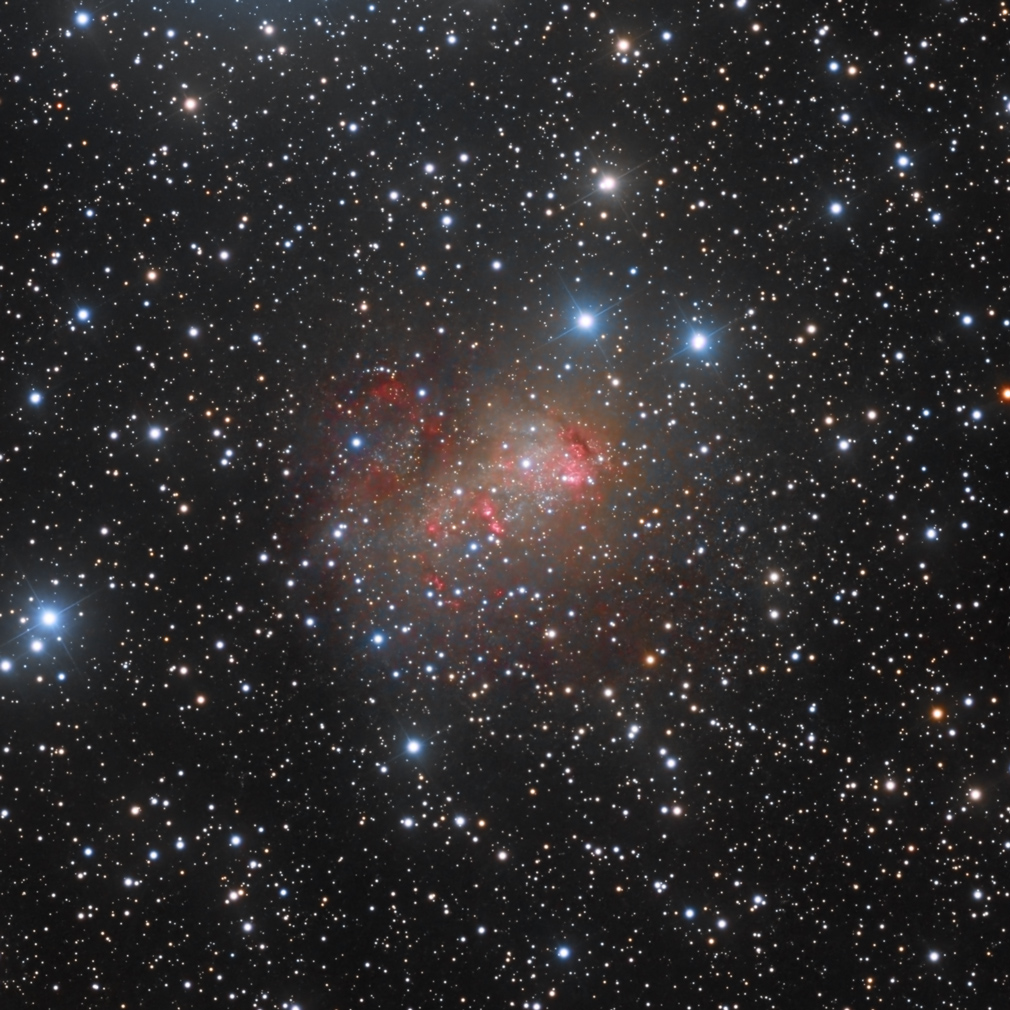
IC10 is a very dim, irregular galaxy, visible in late summer, fall and early winter. IC10 is often classified as a
dwarf galaxy; it is a starburst galaxy.
IC10 is about 2.5 million light years from us (give or take a half million light years); it may be orbiting the huge spiral galaxy M31, our nearest large spiral galaxy neighbor. An unusual
amount of star formation is taking place in IC10 (the most vigorous star-forming regions are the red areas within the galaxy); it is thought that this starburst is a result of a collision between
IC10 and another dwarf galaxy. It has a diameter of about 5,000 light years.
IC10 has a black hole at its center, and it contains far more Wolf-Rayet stars than would be expected.
As you can see from the dense star field in the photo (Pixinsight counts 18,262 stars in the uncropped image), IC 10 lies in the plane of our Milky Way galaxy, so we are looking at it through a
large amount of interstellar dust (in addition to the stars). A result of this (aside from all the stars in the photo) is that the galaxy looks far redder than it probably is, since blue light
is more easily extinguished by dust than red light. By clicking on any version of the image, you can see how I imagine the galaxy would look if it weren't on the other side of all that dust.
Copyright 2021, 2022 Mark de Regt